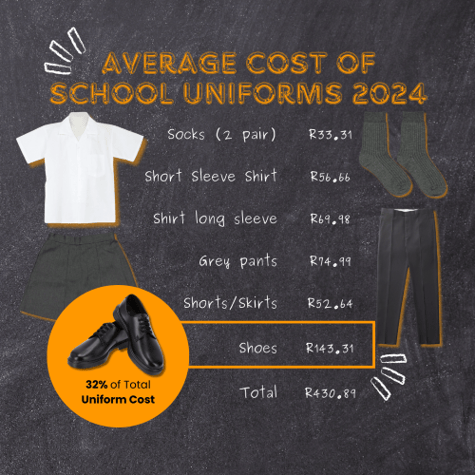Stepping Up: How Donating Shoes Makes an Impact in Education
School shoes serve not only as a practical necessity for school children but also carry significant symbolic value, representing a sense of pride and belonging for each student. When a child dons their school shoes, they are not merely preparing for another day of learning but stepping into a realm of possibilities and opportunities. These shoes symbolize their dedication to education and their commitment to their studies.
.png?width=6912&height=3456&name=FNB%20School%20Shoe%20Campaign%20(1).png)

The statistics around poverty in South Africa are profoundly concerning. The impact of this poverty is keenly felt by parents who struggle to afford school uniforms for their children. As we say, "One starfish at a time," which reminds us of the power of community and working together. It is heartening to observe that even some of the largest financial institutions, such as First National Bank (FNB) in South Africa, are taking a stand to address the challenges faced by the schoolchildren we support who lack proper school shoes. In a commendable display of compassion and commitment, FNB recently donated school shoes to 49 beneficiaries in one of our Community-Based Organizations (CBOs) in the Eastern Cape Province, South Africa.
Many children in public schools in South Africa require school uniforms. A survey of school uniforms from prominent suppliers in South Africa reveals that the average cost of their lowest-end generic school uniforms is approximately R430,89. The cost of the least expensive shoes is approximately R143,31, making them the most expensive generic uniform item and nearly a third of the total cost. The cost makes it difficult for parents to buy new school shoes, and often children wear their old damaged shoes to school.

According to the National Households Travel Survey of 2020, over 16 million South African preschool and school-aged children walk to school at least once a week (link to report). This implies that for over 16 million children, their school shoes are their primary means of transportation. It also suggests that wear and tear are substantial, necessitating more frequent shoe replacements. So it makes sense to buy school shoes of a high quality, which will last longer.
|
Education Level |
Number of South African Children Walking |
|
Pre-school |
1,807,000 |
| School |
14,644,000 |
We express our gratitude to FNB for their support and dedication to improving the lives of schoolchildren in need. It is through collaborations such as these that we can continue to make a difference and ensure that every child has the opportunity to thrive and succeed. Together, we can break the cycle of poverty and forge a brighter future for all.

.png?height=200&name=FNB%20School%20Shoe%20Campaign%20(2).png)




